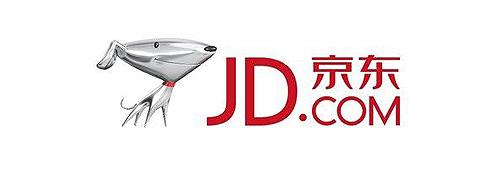Dehumidification Technologies Using Desiccant Wheels
ISBN:978-7-5024-9450-6
作者:Rang Tu Lanbin Liu
出版时间:2023年6月
图书定价:99.9元
推荐语
This book was written based on the author’s work on desiccant wheel dehumidification systems from 2010 to 2022. This was also the topic of the author’s PhD dissertation in Tsinghua University.
内容简介
In this book, latest dehumidification technologies using desiccant wheels were introduced. Physical properties of solid desiccant materials, structures of desiccant wheels, and air handling processes were suggested to enhance thermal performances. In Chapter 1, dehumidification mechanisms of desiccant wheel and physical properties of regular solid desiccant materials were illustrated. In Chapter 2, three numerical models and two prediction models of desiccant wheels, as well as test validations of these models, were presented. Chapters 3 and 4 were about desiccant wheels, discussing influences of wheel structure, rotation speed and adsorption isotherms on the reduction of regeneration temperature. Chapters 5 to 9 were about air handling processes. In Chapter 5, a reversible desiccant wheel dehumidification and cooling system was designed, and irreversible processes were examined. In Chapter 6, air handling processes with single desiccant wheel were studied, aiming to find the inherent performance influencing factors for the existing ventilation systems through exergy destruction analyses. Then, an advanced system with single-stage desiccant wheel driven by heat pumps was proposed and discussed in Chapter 7. In Chapter 8, dehumidification and cooling systems with multi-stage desiccant wheels were designed, and the influences of the number of stages on regeneration temperature were examined, when water and refrigerant are used as cooling or heating media. In Chapter 9, design criterions of highly efficient desiccant wheel dehumidification systems using traditional energies and renewable energies were discussed.
目录
Chapter 1 Dehumidification Mechanisms of Desiccant Wheels
1.1 Heat and moisture transfer mechanism in desiccant wheel
1.2 Properties of solid desiccants
References
Chapter 2 Numerical Models of the Desiccant Wheel
2.1 Coupled heat and mass transfer equations
2.2 Validations of the mathematic models
2.3 Dimensionless mathematic model
2.4 Prediction models of desiccant wheels
References
Chapter 3 Lowering Regeneration Temperature of Desiccant Wheels
3.1 Exergy analysis of the desiccant wheel
3.2 Decreasing exergy destruction
3.3 Decreasing thermal exergy obtained by the processed air
3.4 Conclusions
References
Chapter 4 Effects of Adsorption Isotherms and Rotation Speed on Regeneration Temperature
4.1 The equilibrium isotherms of the desiccant wheel
4.2 Air dehumidification at high and low relative humidity
4.3 Effects of RS, C and Wmax on treg
4.4 Discussions
4.5 Conclusions
References
Chapter 5 Irreversible Processes of Dehumidification Systems with Single Stage Desiccant Wheel
5.1 Performance analysis of a reversible DDCS
5.2 Performance analysis of the ventilation cycle
5.3 Performance improvement of the actual system
5.4 Conclusions
References
Chapter 6 Performance Influencing Factors of Single-Stage Desiccant Wheel Dehumidification Systems
6.1Performance of the ventilation system
6.2Exergetic analysis of the ventilation system
6.3Improved systems for the ventilation system
6.4Conclusions
References
Chapter 7 Performance Analyses ofan Advanced System with Single-Stage Desiccant Wheel
7.1 Methodology
7.2 Comparisons of both systems based on energy consumptions
7.3 Comparisons of both systems based on exergy destructions
7.4 Sensitivity analysis of the advanced system
7.5 Conclusions
References
Chapter 8 Performance Analyses of Dehumidification Systems with Multi-Stage Desiccant Wheels
8.1 Exergy analysis of multi-stage wheel system
8.2 Key performance influencing factors
8.3 Design criterion of high efficiency multi-stage wheel considering the form of cold and heat sources
References
Chapter 9 Design Criterions of Dehumidification Systems with Different Types of Heat Sources
9.1 System description and performance indexes
9.2 Efficient configurations based on treg and Qh or COPlatent
9.3 Efficient configurations of Aratio and SN for different heat sources
9.4 Performance comparisons among different systems
9.5 Conclusions
References
| 图书详情
-
用途分类专著
-
专业分类其他
联系我们
电话:010-6401 5784
邮箱:service@mip1953.com
地址:北京市东城区嵩祝院北巷39号
网址: www.mip1953.com
国务院国有资产监督管理委员会 | 国家新闻出版署 | 国家发展和改革委员会 | 科学技术部 | 工业和信息化部 | 中国钢铁工业协会 | 冶金网
Link
友情链接
Copyright © 冶金工业出版社有限公司 www.mip1953.com 版权所有 | 京ICP备05032908号 京公网安备11010102003462号 | 网络出版服务许可证:网出证(京)字第122号










